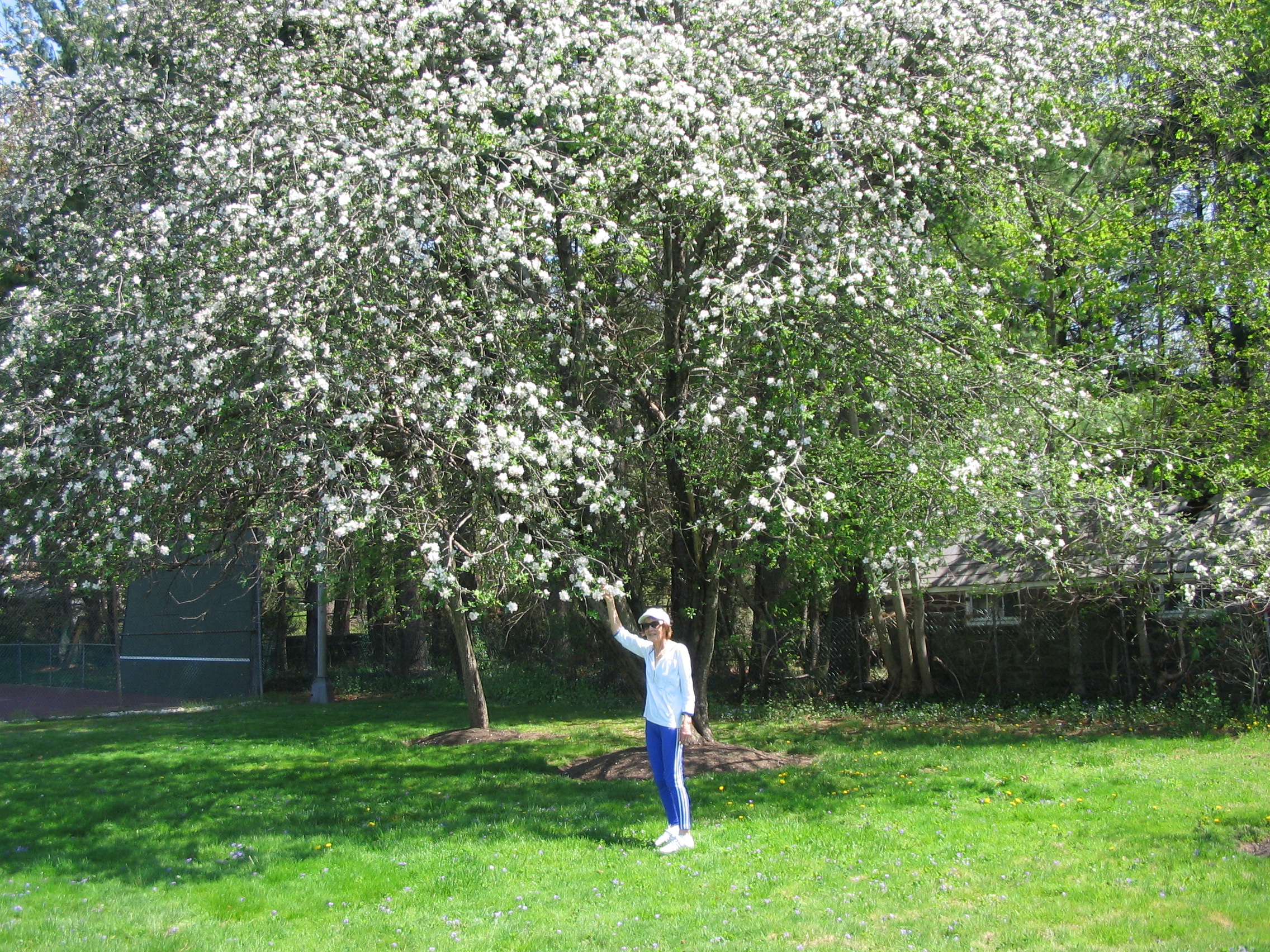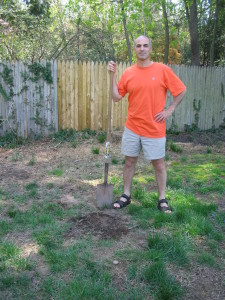
I don’t get much of a chance to dig into the soil in Paris. In fact, there are few places in the City of Light where one can even walk on the grass. Not that I was much of a gardener before moving to Paris, but I do recognize the pleasure, at least in theory, of crouching in the soil, digging, weeding, and watching things flower, grow, take form. My planting thumb, though rarely exercised, turns out to be inadvertently green to judge by the plants on the small balcony of my apartment in Paris; they survive no matter how long I’ve been gone.
I’ve been in the U.S. for three weeks now taking an East-Coast road-trip, doing some consulting, having meetings, and seeing friends and family. When I get back to Paris next week I’m sure to find my plants looking dry and forlorn but alive and willing to be nursed back to health through the spring. The secret to raising plants, I’ve found, is to not get too attached to them.
So I’m trying not to get too emotionally involved with the silky dogwood that I just planted in my brother’s yard in New Jersey, but I confess that I’ve been checking on it several times a day and will probably inquire about it often when I return to Paris. I hope that one day it will take its place among the other hearty blooming trees in the yard such as the pear tree, shown above, near which I’ve planted it.
Living in Paris, I rarely celebrate truly American holiday in the homeland, so I was especially proud to plant the silky dogwood on American soil because today is Arbor Day.
That’s my mother in the photo with the pear tree. I asked her to pose with it in honor of Arbor Day, which she planted many years ago. But as proud as she was to pose for me, she’s quite the fatalist when it comes to my new planting. No sooner had she returned the favor by taking the picture of me below with the newly planted dogwood then she told me that between the deer and the lawnmower I shouldn’t get too attached it. (The sprig of a dogwood is the foot-high twig by the shovel .)
One of the great pleasures of travel is hitting upon a local holiday, even—or especially—when where you’ve traveled is back to your old backyard, in my case to Ewing (aka West Trenton), New Jersey.
 Truth be told, I wasn’t aware that it was Arbor Day until I went to the Ewing Public Library and was happy-arbor-dayed at the entrance by two kindly women from the West Trenton Garden Club who were handing out the sprigs of silky dogwood (cornus amomum). They seemed to be the only people in the area who knew it was Arbor Day. For the rest of the day I went around trying to spread the word, but few people believed me. Most assumed that I meant Earth Day, which had just passed. One person suggested that I was confusing Earth Day with some French holiday. Another insisted that Earth Day had actually replaced Arbor Day since he couldn’t recall anyone mentioning Arbor Day after he left elementary school.
Truth be told, I wasn’t aware that it was Arbor Day until I went to the Ewing Public Library and was happy-arbor-dayed at the entrance by two kindly women from the West Trenton Garden Club who were handing out the sprigs of silky dogwood (cornus amomum). They seemed to be the only people in the area who knew it was Arbor Day. For the rest of the day I went around trying to spread the word, but few people believed me. Most assumed that I meant Earth Day, which had just passed. One person suggested that I was confusing Earth Day with some French holiday. Another insisted that Earth Day had actually replaced Arbor Day since he couldn’t recall anyone mentioning Arbor Day after he left elementary school.
Nevertheless, Arbor Day does still exist. It is a great unsung and original American holiday. It is a rarity in that it promotes neither politics, nor religion, nor nationalism, nor veterans, nor an ethnic group, nor much in the way of commerce. In fact, that’s why it passes so unnoticed. No one outside of garden clubs makes an effort to claim or co-opt it as their own because there would be little immediate advantage in doing so.
Arbor Day is also a rarity on the American calendar in that it originated on neither the East Coast nor the West Coast but smack in the middle, in Nebraska, where civic-minded tree-lover J. Sterling Morton organized the first Arbor Day in April 1872. Within a decade it had spread to other states, with school districts often being the local purveyors of the greening of America. National Arbor Day is now celebrated the last Friday in April, though some states prefer the last Monday, others, particularly in the southeast, celebrate it earlier in the year in keeping with the arrival of prime tree-planting season to the region, and a few northern border states opt for May.
Arbor Day has indeed been overtaken by Earth Day on the tree-hugging calendar. Despite the latter’s laudable goal of placing concern and care for the environment on our national agenda, there was something suspicious about Earth Day from the start since it was intended to teach and demonstrate rather than truly celebrate and honor.
I was in 6th grade when the first Earth Day was declared in 1970. As the school bus was approaching the school that April 22 morning there was a tremendous traffic jam since some progressive-minded older students had apparently decided that we should all get out of the bus and walk the remaining half-mile to school. What I remember of the first Earth Day is therefore cars and buses idling for an hour or two and a long walk past a hundred exhaust pipes. What I remember of last week’s Earth Day is radio and television commercials appealing for Earth-loving consumers to drive out to the mall to buy stuff that will biodegrade sometime before North Korean uranium rods.
Earth Day is a fine idea both nationally and internationally, and some day a traveler from Mars will enjoy the thrill of visiting our planet to celebrate it. But Earth Day is too abstract. That abstractness allows it to be used by large corporations trying to out-green each other and by politicians promising cooperation and big ideas, yet it’s difficult for us to have a personal relationship with such a celebration.
Arbor Day, on the other hand, can be easily expressed and understood and celebrated as a day of planting and caring for trees. Other than for your local tree nursery, it has little place in the economy but lots of place in the backyard or in the local park or in the woods. It requires neither faith nor sacrifice; it demands no presents or ritual meal; it can be celebrated alone, with family, with friends or with complete strangers. It is at once a hopeful and nostalgic celebration of life, growth and terroir, a combination that makes it personal for those who take part. In celebrating Arbor Day we (re)affirm our attachment to a given place in the hope that we will one day return to see what we have planted grown. No traveler could ask for more.
For more about Arbor Day and state by state dates see www.arborday.org.
© 2009, Gary Lee Kraut
See the follow-up to this article, Arbor Day and the Award-Winning Travel Writer.

